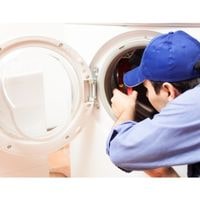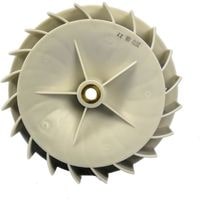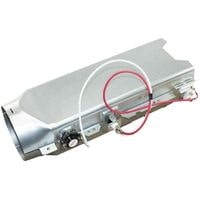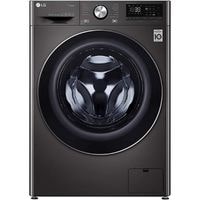LG dryer won’t stop running. Only opening the door makes it stop. Plugging it back in makes it continue to run even after unplugging it.
It continues to run after the cycle is complete. It may be that the door safety switch has become misaligned or has come loose.
LG dryer won’t stop running

Unplug or trip the circuit breaker of the dryer. Now please hold the start/pause button down for at least 5 seconds, and then turn it back on again. If this doesn’t fix the problem, you should call an appliance repair person.
If you’ve come across a problem with an LG Dryer and you were hoping for a solution, there’s still a possibility that it could be addressed using some of the tips listed below.
Problems with the airflow
If your dryer is having trouble drying your clothes properly, it could be because the venting system isn’t working as well as it should.
This can happen if any debris or fur gets lodged in the vent and prevents air from flowing freely through it. If you live in an area with a lot of dust or animal activity, you may want to get this fixed at least once per year.
Gas valve solenoid coils are defective
Dryers require energy, which is provided by the power cord from the wall outlet. Dryers are designed with two or more gas valve solenoid coils.
These gas valve solenoid coils open gas ports to ignite the burner assembly inside the dryer to provide enough heat for drying laundry items.
However, if one of these gas valve coils breaks down and stops working, then this may cause your dryer to not heat properly.
Furthermore, it may also be problematic if it continues running without any sign of stopping. In order to test if one or more of your gas valve coils have stopped working, we recommend you test the igniter.
If the igniter is on but doesn’t ignite the natural gas at all by lighting up as usual then this means that one or more of your gas valve solenoid coils are broken and need replacing.
Check the blower wheel’s performance

The blower wheel of a dryer is a crucial element. It’s the part of the machine that draws air through the moisture sensor and pushes it out the vent to be vented outside.
Clumps, socks, and small articles of clothing can escape into the lint filter and get caught in the blower wheel.
In addition, as time goes on, the perfect condition of your Blower Wheel won’t be preserved forever and eventually ends up wearing out.
If this happens, there will be a chance for it to cause some problems with your system since then there might be some chances for this defective part to allow your Blower Wheel to become obstructed, not allowing warm air flow any longer or worse, causing serious risks for a fire hazard.
So having this in mind, if you want all these possible situations to happen to you we strongly suggest immediate peace of mind by either repairing or replacing your broken system as soon as possible.
Heater element assembly not working

The heating element warms the air before it enters the drum.
If you notice that your dryer is taking too long to dry your clothes, it could be that a fuse to the heating element has burned out.
There are thermistor fuses or thermal-magnetic fuses which will blow if they go above a certain temperature and reduce the flow of electricity to your heater.
To determine if one of these has blown, simply use a multimeter to test for its continuity.
If your fuse does not have continuity, replace it so you aren’t waiting all day for your clothes to dry.
Defective Moisture Sensor
The moisture sensor monitors the clothing’s moisture level and sends a signal to the control board when the clothes are dry.
If the moisture sensor is malfunctioning, it could report that the clothing is still moist even though it has dried, leading to an unnecessary and wasteful cycle of repeated drying.
So before replacing the moisture sensor check all of the other components – if any of them have failed, they should be replaced while you’re at it. However, more often than not this is rarely the case.
Faulty Timer
Thermistor issue
If the clothes are not dry in your laundry, perhaps the thermistor is gone. A thermistor is used to determine when the heat should be turned on and off during a wash cycle.
Sometimes the thermistor can get stuck which causes the water temperature to remain cold or even become too hot.
The most common reason for this problem is a malfunctioning thermistor, but it can also be caused by other problems with your heating unit or any part of your dryer’s manifold system.
Thermostats without continuity
The high-limit thermostat monitors the dryer’s temperature. When it overheats, it turns the burner off.
If this is happening unusually often, check all more commonly defective parts like the thermostat, the igniter, the wire connector, and the gas valve assembly.
Make sure that everything else is working. It’s unlikely that a malfunctioning high-limit topper would be causing an issue unless other components are experiencing problems in their functionality.
The best way to test whether or not your thermostat needs to be replaced is by using a multimeter to test it for continuity.
Related Guides
Related Guides
